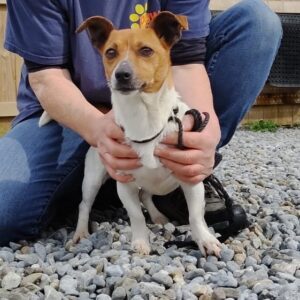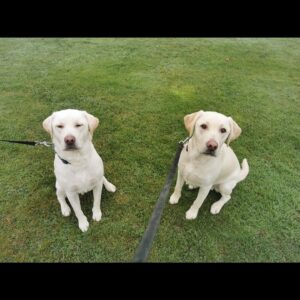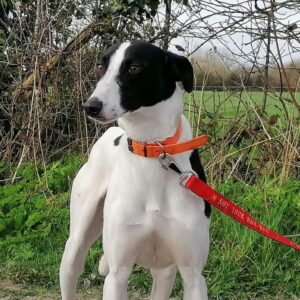Some dogs, like people, do not enjoy being touched or petted or are even just sensitive to particular areas of their body. In some rescue dog cases, adult rescue dogs’ tolerance to being touched may vary significantly. Many rescue dogs may sometimes be touch sensitive because they have experienced painful or traumatic experiences. In other cases, puppies need to be taught that human touch is positive and can be rewarding too. Here is our guide on conditioning touch sensitive dogs.
Touch sensitivity is when a dog reacts negatively to the anticipation of being touched or when being touched. The dog may growl, snarl, flinch or show other defensive behaviours. A dog may react defensively to only being touched in certain areas (i.e. paws, ears, mouth) or on many areas of their body. It’s important to note that you should first rule out an underlying medical condition with a health screen from a reputable vet. In particular worrying cases, you should consult a reward based dog trainer or behaviourist.
To desensitise a touch sensitive dog to being handled and show them that it can be a positive experience, we need to take it very slow and go at their pace. Begin with short 3-5 mins sessions at a time.
Start by allowing the dog to spend time sniffing and eating treats out of your hand or tossing treats to them while sitting down with them. This can be the same method for teaching a touch sensitive dog that wearing a harness or collar. Start the same way with the harness, muzzle or collar etc on the ground and allow the dog to spend some time sniffing and eating treats on and around the harness.
When they’re comfortable with this step, you can move to the next step. For example, start by reaching your hand towards your dog’s paw, and reward your dog if they don’t react. If your dog reacts by moving their paw away from you, do NOT punish them. This is your dog’s way of saying, “you’re going too fast and I’m unsure
about this!”.
about this!”.
Slowly move to place your hand somewhere less scary like their back or shoulder. If they show any calming signals that they are uncomfortable, such as stiffening their body or showing whites of their eyes, yawning or avoiding eye contact, you are moving too fast and they are letting you know they are finding it stressful. Backing off away from them again will help increase their confidence and show them that you can go at their pace and they will not be forced into any uncomfortable situations.
When you first touch them without stress, keep it short, quickly remove your hand, verbally praise and reward them, then repeat in short sessions. When this is achieved, start to move your hand to different areas of their body, their paws, their ears and offer a tasty treat each time they accept the touch.
In the case of equipment training place it closer to them gently using praise and treats each time they make the choice to engage with your hand or the equipment by taking treats and sniffing it. Apply the same process. If they start to exhibit stressors, or calming signals, that they are not comfortable then go back to step one.
In the case of any kind of equipment training, gently lift the harness closer to the dog’s head but if she backs off or reverses out of it, do not chase her and force it on her. Do this kind of training when you don’t need her to wear it or you’re under pressure for time. This needs to go at a very slow pace.
Keep these sessions short and positive. Give them time and offer a treat everytime the dog allows the harness to touch them without stressing it out. Build this up over time until they will allow touch for short periods of time and then build up to longer lengths of time.




